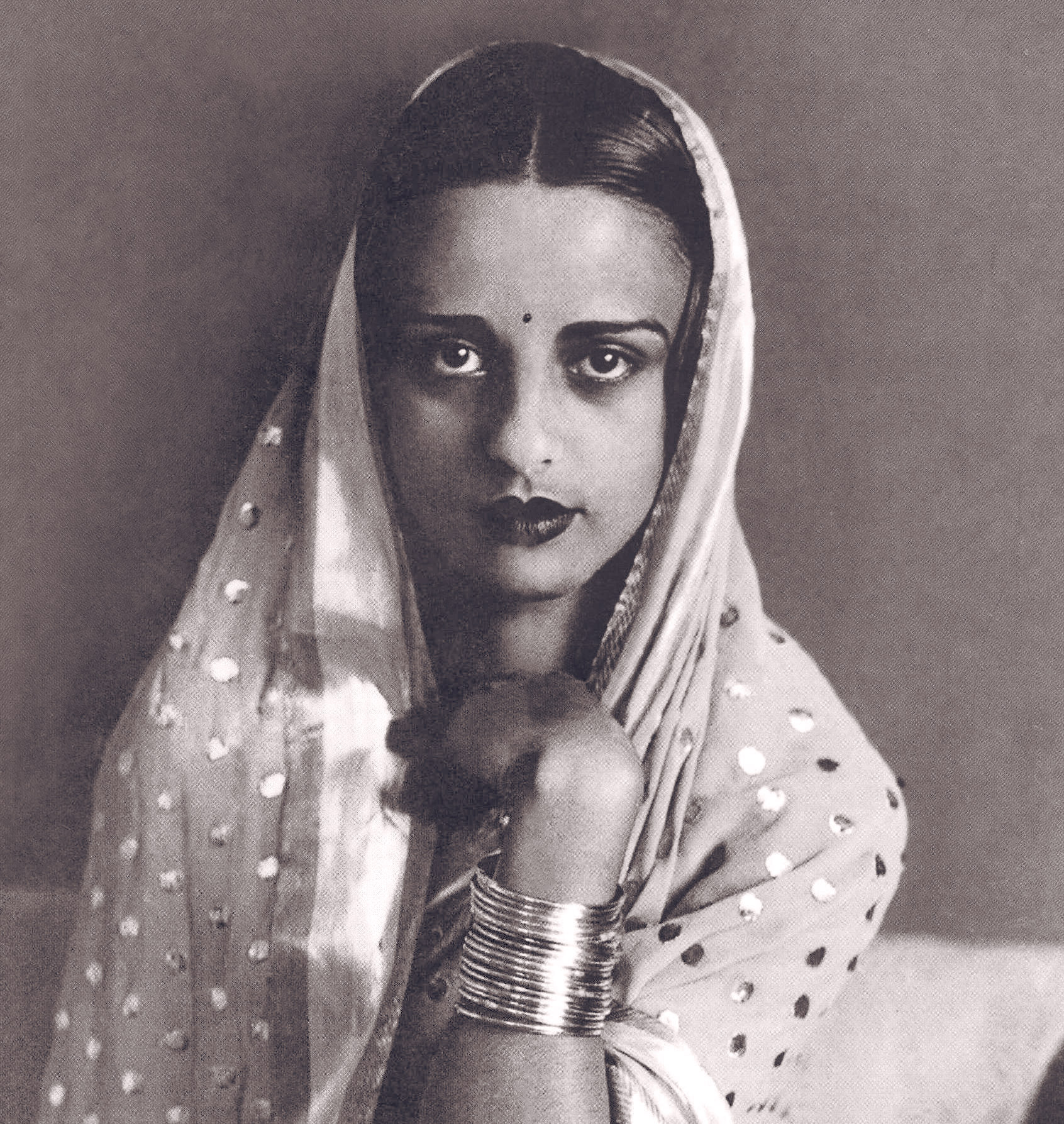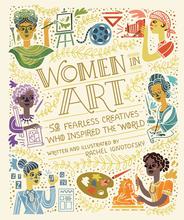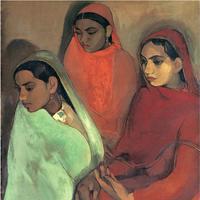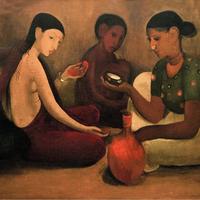More about Amrita Sher-Gil
- All
- Info
- Shop
Works by Amrita Sher-Gil

Contributor
Amrita Sher-Gil is claimed as the “Indian Frida Kahlo”, which is basically a simple way of saying that she is one of the most badass artists of her, and perhaps all time.
Born in 1913 to a Hungarian opera singer mom and an Indian Sikh aristocrat dad, Amrita was born with some privilege. She grew up in Budapest with her family, who was forced to stay in Europe until the end of the First World War. As soon as it ended, the family moved to Simla, India where Amrita and her sister lived a cultural double life. It was half a stuffy English childhood full of scheduled activities and Emily Post etiquette and half a colorful, vibrant life that the foothills of the Himalayas encourages. And based on the fact that Amrita was expelled from her convent school for announcing herself an atheist, we know which of the two lives she preferred.
In 1929, at the tender age of sixteen, Amrita left India behind for L’Ecole des Beaux Artes in Paris and immediately soaked up the bohemian lifestyle. Like her Mexican counterpart, Amrita began a slew of affairs with both men and women. She could flounce from lover to lover because, as one of her lovers described, “she had that hard core of the artist that keeps itself aloof and untouched.” This sex was a source of inspiration for her work, which of course isn’t the most original idea, but the pieces that were the result of her promiscuity are sweet so we’ll let it go. But one day a flip switched and Paris was no longer her place. She longed for India and claimed, “Europe belongs to Picasso, Matisse and Braque and many others. India belongs only to me.” You can see her rather spoiled upbringing in claiming that India was hers but we get it. Europe was a boy’s club full of all that machismo BS and she was sick of it.
India brought her infinite inspirations, muses, and subsequently lovers. So many in fact that her parents started burning her love letters in an effort to prevent a scandal. At the age of 25 Amrita shocked everyone by deciding that she was going to get herself a husband. Her parents were delighted...until she decided on her poor Hungarian cousin. He was a doctor and they bonded over the many abortions that he provided for Amrita during her conquest of Europe. They had become very close over the years, obviously. Shortly after their marriage though, Amrita suddenly died at the age of 28, which makes the fact that her name translates to “immortality” a sick joke. The cause is unknown but is thought to have been a botched abortion or peritonitis. The longevity of her legacy makes us question whether she is the Indian Frida Kahlo or if Frida is the Mexican Amrita Sher-Gil.
Sources
- Kumar, Shikha. "A Life In Art". The Indian Express. N.p., 2014. Web. 6 July 2017.
- Richards, Melanie. "Badass Lady Creatives [In History]: Amrita Sher-Gil | Design Work Life". Design Work Life. N.p., 2014. Web. 6 July 2017.

Contributor
Amrita Sher-Gil fell just one year short for the 27 Club.
Sher-Gil would have been a natural addition to the 27 club as she was a crazy hot socialite, born into the upper class.
The Indian artist was born to Hungarian Opera Singer, Marie Antoinette Gottesman and Sikh Aristocrat/scholar Umrao Singh Sher-Gil Majithia, in 1913. Her parents were living in Budapest at the time. Growing up, Amrita would visit her mother’s family and hang out with her cousins in Hungary. She first met her husband here. It was her cousin, Victor Egan. She married him in 1938 when she was 25. Her mother wasn’t entirely happy about this.
Amrita moved to Shimla, a small hill station in Northern India when she was 8. At the time, India was still under British rule. Her father’s family was fairly well-connected. She would socialize with both British aristocrats and rebels of the Indian National Congress. She left India for Paris in 1929.
Amrita studied at the Ecole de Beaux-Arts in Paris. She was only sixteen when she got there. What a life! Parents, if you’re reading this, be more like Marie Antoinette and Umrao Singh. Trust your kid, let them go to Paris.
The Indian painter did very well in Paris. She even won a gold medal for her painting Young Girls. After five years in Paris, Amrita knew it was time to go back home, to India. She said, “‘Europe belongs to Picasso, Matisse and Braque, and many others. India belongs only to me.” In 1934, she progressed into the most emotional stage of her art practice. She wanted to paint India the way it had never been seen before, and wanted to paint women as they were, not as they were fantasized.
Amrita died in Lahore as a consequence of an abortion procedure gone wrong.
Sources
- Mzezewa, Tariro. “Overlooked No More: Amrita Sher-Gil, a Pioneer of Indian Art.” The New York Times. The New York Times, June 21, 2018. https://www.nytimes.com/2018/06/20/obituaries/amrita-shergil-dead.html.
- “Amrita Sher-Gil Biography - Paintings, Artworks, Achievements & Facts.” Biography - Paintings, Artworks, Achievements & Facts, n.d. https://www.culturalindia.net/indian-art/painters/amrita-shergil.html.
- Vanita, Ruth. Same-Sex Love in India: Readings from Literature and History. New York, NY: Palgrave, 2006.
- “Amrita Sher-Gil.” National Gallery of Modern Art, New Delhi, n.d. http://ngmaindia.gov.in/sh-amrita.asp.
- “Young Girls.” Young Girls - Amrita Sher-Gil - The Athenaeum, n.d. http://www.the-athenaeum.org/art/detail.php?ID=152150.
- Hughes, Kathryn. “The Indian Frida Kahlo.” The Telegraph. Telegraph Media Group, June 3, 2013. https://www.telegraph.co.uk/culture/10087130/The-Indian-Frida-Kahlo.html.
Featured Content
Here is what Wikipedia says about Amrita Sher-Gil
Amrita Sher-Gil (30 January 1913 – 5 December 1941) was a Hungarian-Indian painter. She has been called "one of the greatest avant-garde women artists of the early 20th century" and a pioneer in modern Indian art. Drawn to painting from an early age, Sher-Gil started formal lessons at the age of eight. She first gained recognition at the age of 19, for her 1932 oil painting Young Girls. Sher-Gil depicted everyday life of the people in her paintings.
Sher-Gil traveled throughout her life to various countries including Turkey, France, and India, deriving heavily from precolonial Indian art styles as well as contemporary culture. Sher-Gil is considered an important painter of 20th-century India, whose legacy stands on a level with that of the pioneers from the Bengal Renaissance. She was also an avid reader and a pianist. Sher-Gil's paintings are among the most expensive by Indian women painters today, although few acknowledged her work when she was alive.
Check out the full Wikipedia article about Amrita Sher-Gil














